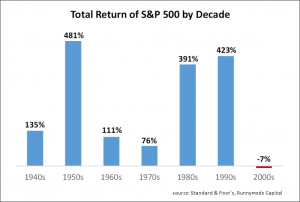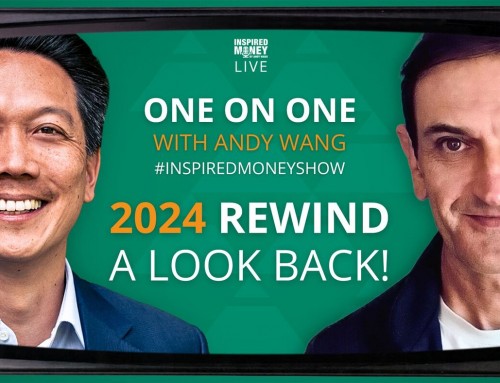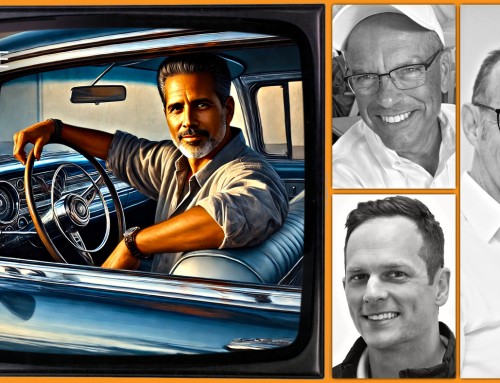Runnymede believes that monitoring the financial climate is important in order to be successful as an investor. With 24/7 news reporting, live tweeting, and high frequency trading, it is easy to be distracted by the daily noise and the immediate impact on stock prices. Rather than dealing in milliseconds, it can be helpful to take a step back for a different perspective. Below is a chart showing the total return of the S&P 500 by decade in which you can see that performance over the past six decades has been impressively positive until the last one.

Here are a few possible reasons why there may be a major change taking place:
- The longest war since 2003 still continues even after 12 years.
- The government’s debt to GDP has risen from 54% in 2000 to 103% in 2015.
- After the internet bubble burst in 2000, there was the housing bubble in 2008 and now the QE bubble. All bubbles burst, sooner or later.
- The Federal Reserve held $476 billion in Treasury securities in 2008. In order to support the financial markets, the Fed's balance sheet has grown in excess of $4.2 trillion by buying Treasuries and mortgage related securities.
Wars and high levels of debt have led to and will likely continue to result in financial market instability. The “buy and hold” strategy which was born after World War II that has served investors so well for decades may need reexamination. If the financial climate has changed, the past may not be repeated in the future unless the government can reverse its current negative trend with regard to its balance sheet. It’s prudent to at least consider the possibility that the long-term stock market trend may be going sideways and becoming more volatile in what remains of the current decade.
We have certainly seen volatility return in 2015. Just yesterday in the DJIA, we saw a 282-point rally in the morning and a 143-point decline in the afternoon. From yesterday's peak to today, we've seen a swing of more than 550 points! Do your best to ignore the noise and focus on what counts.
Do you think that investing in 2015 will require a fresh or different approach?
By





